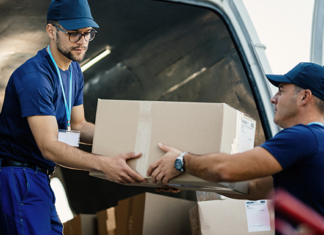Slip and fall fraud schemes are deceptive practices where individuals purposely stage or exaggerate accidents in public or private spaces to file fraudulent insurance claims or lawsuits seeking financial compensation. While genuine slip and fall accidents can occur due to hazardous conditions, fraudsters exploit these incidents for personal gain, often by feigning injuries or fabricating circumstances to support their claims. Here are five common slip and fall fraud schemes and how to recognize them.
1. Staged Accidents—Fraudsters intentionally create hazardous conditions or manipulate existing ones to orchestrate slip and fall incidents. For example, they may spill liquids, scatter debris, or tamper with surfaces to create slippery conditions conducive to falls. These staged accidents are carefully planned to make it appear the individual experienced a genuine injury due to negligence on the part of the property owner.
2. Exaggerated Injuries—In cases where a genuine accident occurs, fraudsters may exaggerate the extent of their injuries to inflate their insurance claims or legal settlements. They may seek unnecessary medical treatment, undergo unnecessary procedures, or falsify medical records to support their claims of severe or long-lasting injuries.
3. False Witnesses—Fraudsters may enlist accomplices or persuade bystanders to act as witnesses to corroborate false claims. These false witnesses provide fabricated testimonies or distorted accounts of the incident to strengthen the fraudster’s case and increase the likelihood of receiving compensation.
4. Preexisting Conditions—Some fraudsters exploit preexisting medical conditions or injuries to falsely attribute them to slip-and-fall accidents. They may claim that their injuries worsened as a result of the incident, even if there is no causal link between the accident and their medical condition.
5. Multiple Claims—Fraudsters may attempt to file multiple slip and fall claims against different property owners or insurers using similar or identical circumstances. By engaging in serial fraud, they seek to maximize their financial gain while evading detection by spreading their fraudulent activities across multiple locations or incidents.
Recognizing slip and fall fraud
Detecting slip and fall fraud requires careful investigation and scrutiny of the circumstances surrounding the incident. Here are some indicators that may suggest fraudulent activity.
Conflicting Accounts: Discrepancies or inconsistencies in the fraudster’s version of events, especially when compared to witness testimonies or surveillance footage, may signal deception.
Lack of Witnesses: In genuine slip and fall accidents, there are typically witnesses who can corroborate the incident. The absence of credible witnesses or the presence of suspicious witnesses may raise doubts about the claim’s legitimacy.
Delayed Reporting: Fraudsters may delay reporting the incident to authorities or property owners to avoid immediate investigation or evidence collection. A significant delay in reporting may indicate fraudulent intent.
Unreasonable Demands: Fraudsters may make unreasonable or excessive demands for compensation, such as inflated medical bills or exaggerated pain and suffering claims, which far exceed the actual damages incurred.
Pattern of Claims: Individuals with a history of filing multiple slip and fall claims or engaging in other fraudulent activities may be more likely to perpetrate fraud in future incidents.
Preventing slip and fall fraud
Preventing slip and fall fraud requires a collaborative effort involving property owners, insurers, and law enforcement agencies. Implementing the following measures can help deter fraud and protect against deceptive schemes.
Surveillance Systems: Install surveillance cameras in high-risk areas to monitor for suspicious activity and capture evidence of fraudulent incidents.
Safety Measures: Implement proactive safety measures, such as regular maintenance, hazard inspections, and clear signage, to reduce the likelihood of slip and fall accidents and mitigate potential liability.
Training and Awareness: Educate employees, property managers, and the public about the signs of slip and fall fraud and the importance of reporting suspicious activity promptly.
Vigilance: Remain vigilant and attentive to potential fraud indicators and conduct thorough investigations into all slip and fall claims to uncover fraudulent activity.
By taking proactive steps to prevent, detect, and combat slip and fall fraud, property owners can safeguard against financial losses and preserve the integrity of the insurance system. Additionally, raising awareness about the prevalence and consequences of slip and fall fraud can empower individuals to recognize deceptive schemes and take action to prevent them.

















